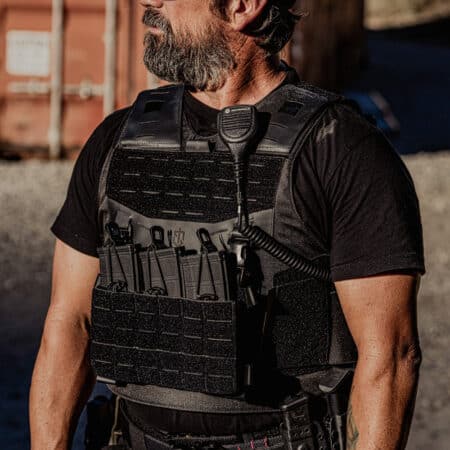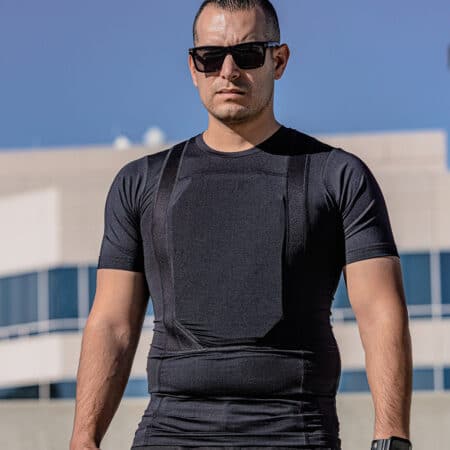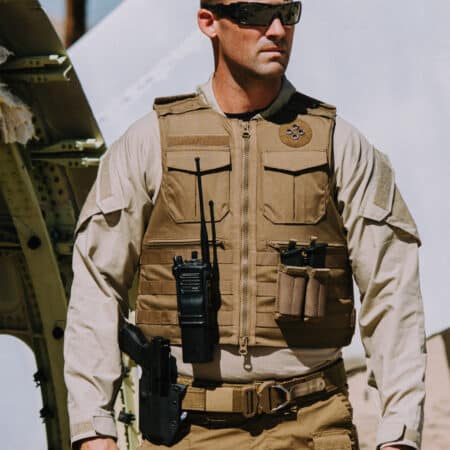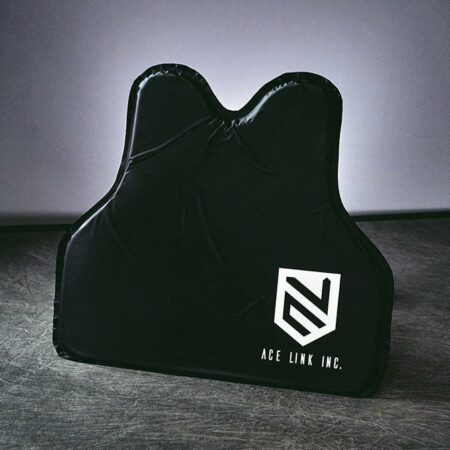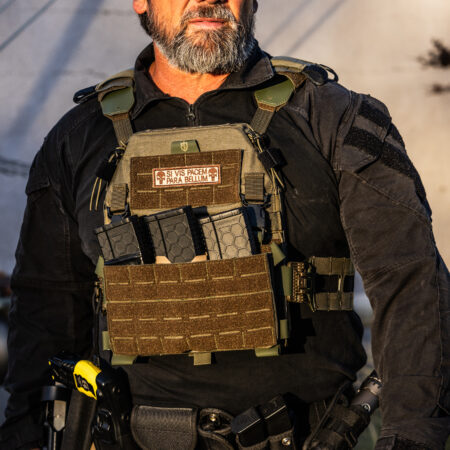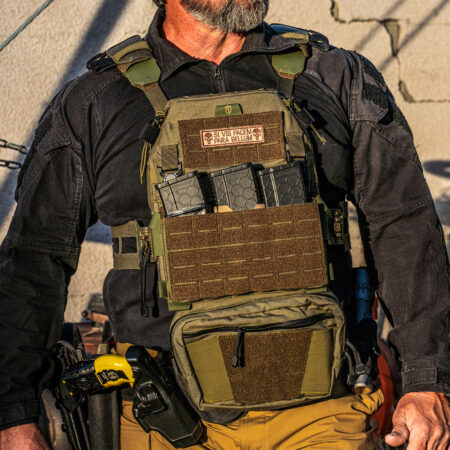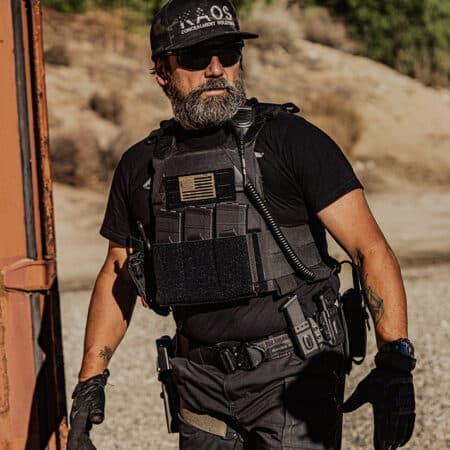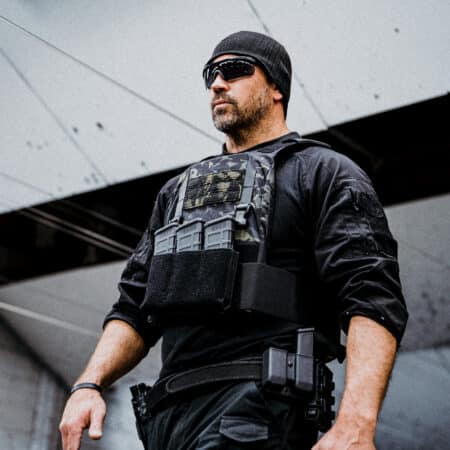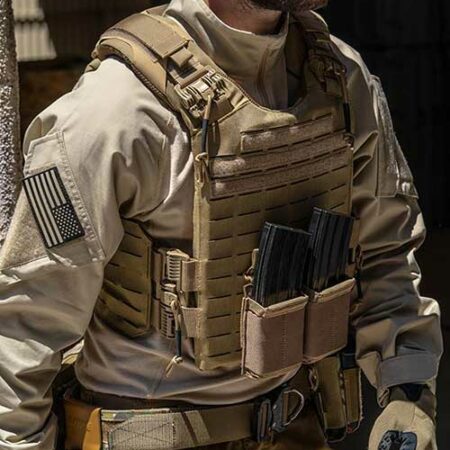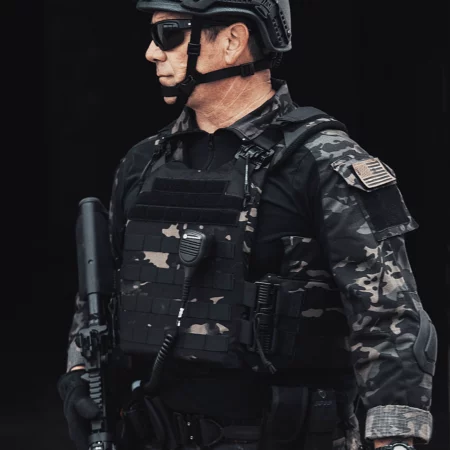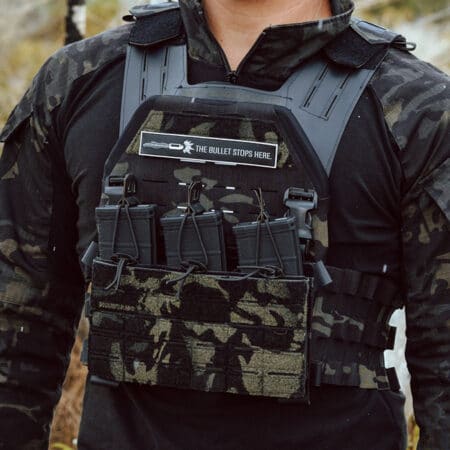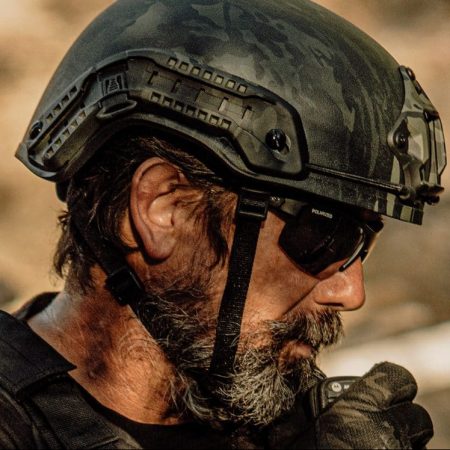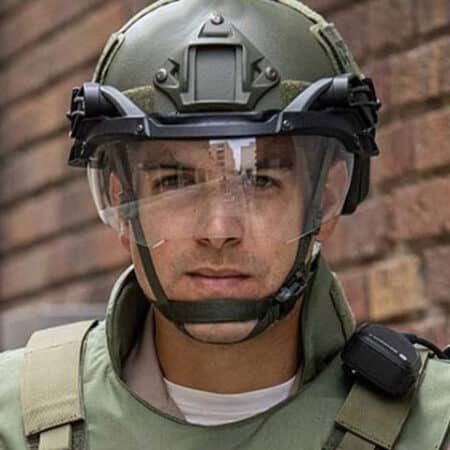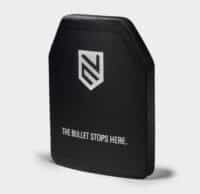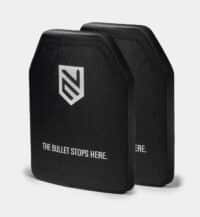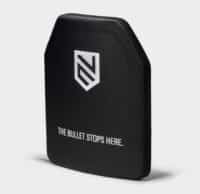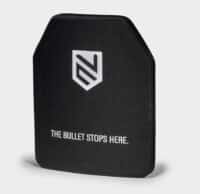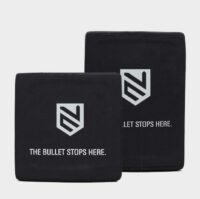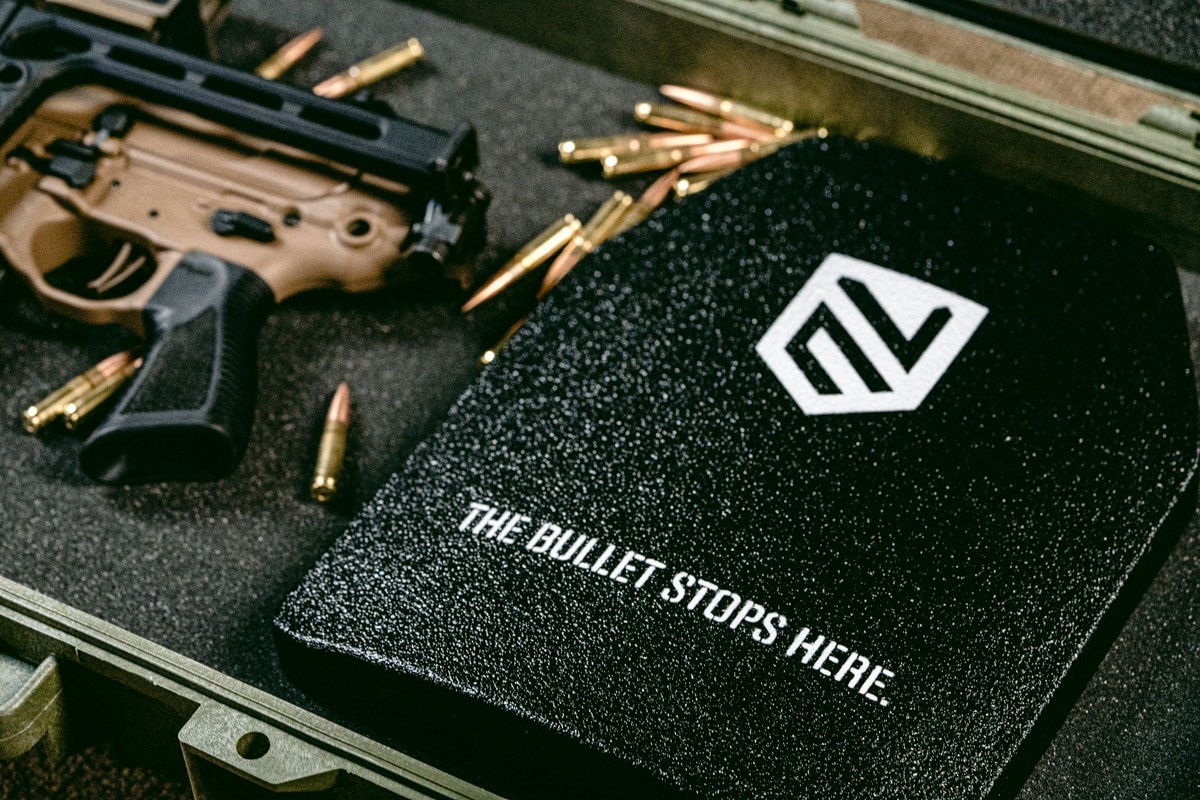
Level 4
LEVEL 4 BODY ARMOR
Level 4 Armor Plate Guide
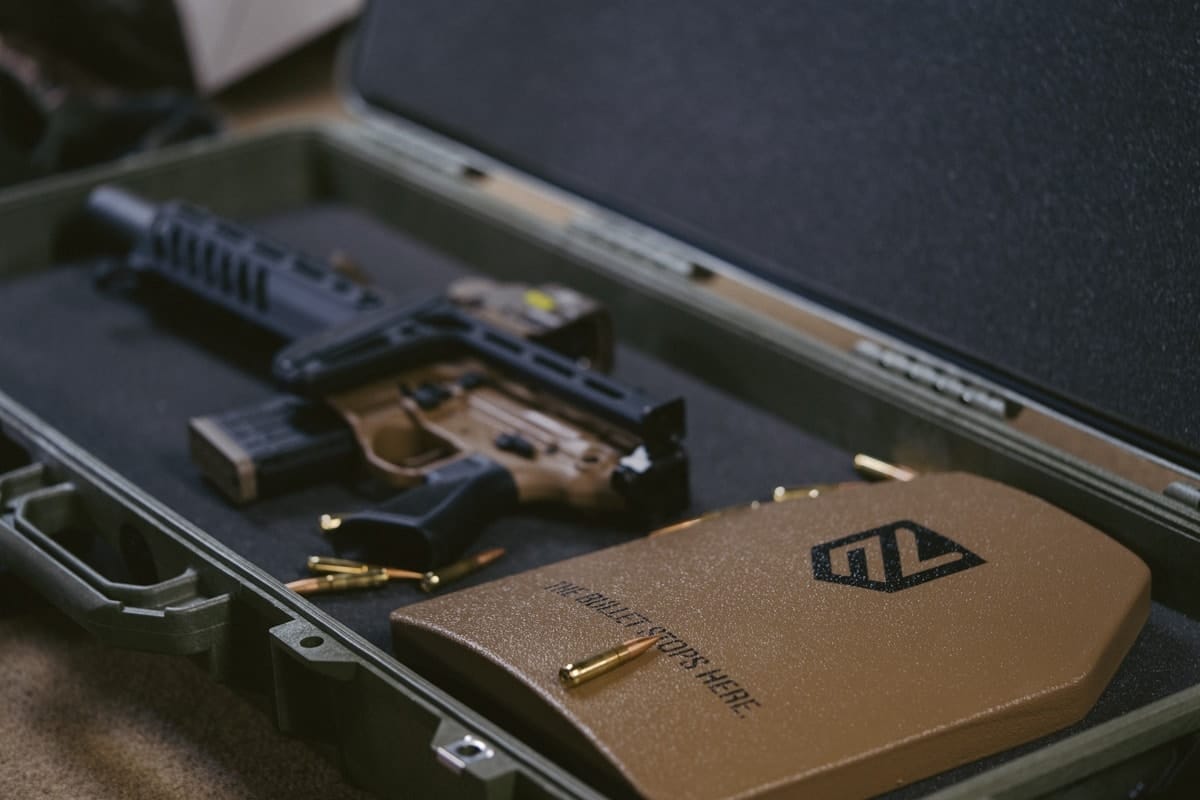
Level IV
Level 4 body armor is the highest level of ballistic protection available. It is designed to stop armor-piercing rifle rounds and other high-velocity projectiles like .30-06 M2AP and 7.62x63mm AP. This level of armor is typically used by law enforcement, military personnel, and individuals who may be facing significant rifle threats.
Level 4 armor consists of ceramic plates combined with other materials such as aramid fibers or polyethylene. The ceramic plates are designed to shatter upon impact, dissipating the energy of the bullet and preventing penetration. The additional materials help provide structural integrity and enhance the overall protective capabilities of the armor.
Due to the higher level of protection offered, Level 4 armor is heavier and thicker compared to lower level armor. This can potentially affect wearer comfort and mobility, making it less suitable for prolonged use or situations requiring agility.
Remember, the effectiveness of body armor depends not only on its level but also on its proper use, maintenance, and the specific threats it is designed to counter.
The highest threat protection available
When you need nothing but the best and highest level of protection against ballistic threats, choose level IV.
Level IV body armor is designed to provide protection against high-velocity and high-caliber rifle threats, including armor-piercing (AP) ammunition. It is capable of stopping various types of rifle rounds but is tested to .30-06 M2 AP and 7.62x63mm AP.
As threats escalate, escalate your protection
In an era marked by escalating global unrest, the imperative for Level IV body armor becomes paramount. The surge in conflicts, civil disturbances, and security threats shows the need for heightened protection against the prevalence of high-velocity rifle threats.
Level IV armor’s unparalleled ability to halt armor-piercing ammunition and other powerful rifle rounds positions it as a critical asset for navigating the uncertainty of our times.
As tensions escalate and adversaries potentially wield increasingly potent firearms, the comprehensive shield of Level IV armor emerges as an essential safeguard. Whether facing armed conflicts or addressing local security challenges and crime, level IV armor is up for the task.
Groundbreaking Technology
With groundbreaking modern technology, body armor is now better than ever. Level IV body armor can be made from different materials, the most common being steel, ceramics, and UHMWPE.
We do not use steel plates due to spalling, weight, and being outdated. Steel plates have an inherent problem of spalling, which is when the bullet or its pieces ricochet off the plate and hit the wearer, or the people around them. To help mitigate this problem, steel plates have a rubberized strike face however, this only reduces spall and does not fix steels many other shortcomings.
However, our level IV body armor plates are made from Ceramics, which are much safer, lighter and still can take multiple hits. There is no need to compromise.
Optimized for Modern Combat
As warfare evolves and adversaries wield increasingly sophisticated weaponry, the imperative for advanced ballistic defense becomes evident. Level IV body armor is specifically tailored to withstand high-velocity rifle threats and armor-piercing ammunition, resonating with the demands of contemporary conflict.
It is lightweight yet formidable composition strikes an essential balance between mobility and protection enabling combatants to navigate complex terrains while still being protected from .30-06 threats.
Moreover, the armor’s multi-hit capability ensures sustained protection in the face of rapid and relentless fire. By leveraging cutting-edge materials and design principles, Level IV body armor exemplifies the fusion of technology and tactical necessity, thereby offering a crucial advantage in the multifaceted challenges of modern warfare.
KNOW ABOUT Level IV Armor Plates
Will this Level 4 body armor plate stop Armor Piercing rounds?
Yes! our ballistic plates meet Level 4 National Institute of Justice standard. Able to stop black-tip 5.56mm as well as .30-06-cal. APM2. (Armor Piercing Rounds), our Level IV Armor Piercing rated plates are multi-hit tested and are trusted in the armor industry for their effectiveness and affordability. You can read more about the level of protection in our blog articles.
What types of armor plate profiles do you currently offer to those who are looking to buy Ceramic/PE Plates?
We offer a standard SAPI cut profile in Level 4.
Can civilians own Level 4 body armor plates?
Not only law enforcement but also civilians may own any level of body armor or armor plates, as long as the State’s Laws or Law Enforcement where they live do not prohibit them from doing so.
What is the typical lead time on this body armor plate?
If our level 4 body armor plates are in stock they typically ship out within 24 hours. When back-ordereded, lead time for body armor is usually 2-3 weeks, depending on the order. Get your quality body armor protection on the right price and without waiting!
Is ceramic body armor fragile?
Ceramic body armor is not inherently fragile but is more brittle compared to other materials commonly used in body armor construction. The hardness and brittleness of ceramic helps it stop rifle calibers and even armor piercing (AP) rounds in certain configurations. Ceramic materials, like alumina or boron carbide, are favored for body armor because of their hardness and how effective they are at dispersing energy from a bullet impact, thereby reducing the risk of injury to the wearer. Ceramic strike faces are used in conjunction with other materials behind it, such as aramid fibers or UHMWPE, to create what is known as “composite armor.” Proper design, testing, and construction techniques help ensure modern ceramic body armor survives drops and is durable enough to withstand any situation.
What is NIJ certified?
NIJ certified refers to products that meet and pass the Compliance Testing Program (CTP) set by the National Institute of Justice (NIJ). The NIJ, under the U.S. Department of Justice, is responsible for establishing and maintaining standards for various aspects of law enforcement equipment, like body armor.
When a product is NIJ certified, it means that it has undergone extensive lab testing and evaluation to meet the specific performance and safety standards set by the NIJ. All NIJ certified products are on the Compliant Products List (CPL). The NIJ has established different levels, such as Level IIIA, Level III, and Level IV, each indicating levels of protection against different ballistic threats.
The NIJ compliance standards help ensure that law enforcement and security personnel are provided with reliable and effective equipment that meets consistent safety and performance criteria.
What is NIJ tested?
When a product is described as “NIJ tested” or “rated” it means that the product has not gone through the NIJ Compliance Testing Program and is not listed as certified. NIJ tested means independently tested by a 3rd party lab to meet or exceed NIJ standards. You will not find these products on the NIJ CPL.
Both NIJ-certified and NIJ-tested products are designed to meet the established standards of the National Institute of Justice, the key difference lies in the level of scrutiny and verification involved. NIJ-tested products are designed to meet the standards, while NIJ-certified products have undergone official NIJ testing and evaluation to confirm their adherence to those standards.
What is Back Face Deformation? (BFD)
Back face deformation (BFD), also known as “back face signature” or “back face deflection,” refers to the deformation that occurs to the wear side of armor when struck with a projectile. It is an important factor in assessing the effectiveness of body armor in stopping or mitigating the impact of ballistic threats.
When a bullet strikes body armor, the energy from the impact is absorbed and dispersed throughout the armor material. Some of this energy is transmitted through the armor and can cause the material on the opposite side (the side facing the wearer’s body) to deform. This deformation can potentially cause injury or even death to the wearer if it is excessive, even if the bullet itself did not penetrate the armor. This is why BFD is so important.
Back face deformation itself is measured in millimeters and is used as a standard metric for evaluating the safety and performance of body armor. Due to its importance, The National Institute of Justice (NIJ) has established maximum allowable limits for back face deformation at 44mm or 1.7inch. These limits ensure that the resulting deformation from stopping a rated ballistic threat remains within safe limits.
Steel body armor vs. ceramic?
Steel Body Armor Plates:
Advantages:
Cheap: Steel plates are the cheapest rifle plates available.
Durability: Steel plates are extremely robust and less prone to cracking or fracturing compared to ceramic plates.
Multi-Hit Capability: Steel plates have better multi-hit capability, meaning they can withstand multiple impacts easier without sacrificing performance.
Disadvantages:
Weight: Steel plates are heavier than ceramic plates of the same protection level, which can affect mobility and comfort.
Spalling: Upon impact, steel plates generate spall (fragments) that may cause injury or even death to the wearer or those nearby. Spall mitigation measures do exist but do not fully prevent this.
Old Technology: Metal armor is nothing new or innovative. It is extremely old technology that offers little benefit over more modern materials.
Ceramic Body Armor Plates:
Advantages:
Lightweight: Ceramic plates are much lighter than steel plates of comparable protection levels, allowing for better mobility and reduced fatigue during extended wear.
Better Ballistic Performance: Ceramic materials are much more effective at dissipating and spreading the energy of an impact, making them more efficient at stopping bullets.
New technology: Ceramic body armor uses the latest and most advanced materials and processes available.
Disadvantages:
Durability: Ceramics can be more brittle than steel, and they can crack or fracture under extreme conditions, especially if subjected to impacts or stresses.
Multi-Hit Capability: Ceramic plates might experience reduced effectiveness after multiple shots due to a compromise in the ceramic strike face. However, modern ceramic plates are multi-hit rated and are tested up to six rounds.
Ultimately, the choice between steel and ceramic body armor plates is clear. Steel plates can offer protection at a lower cost, but they are heavy and can generate spall. Ceramic plates are lighter, offer better ballistic performance, and are less likely to generate spall, but they can be more fragile. Consider spall, durability, your budget, and your tolerance for weight when making your decision.
Does body armor expire?
Yes, body armor can expire or have a recommended service life. Body armor is made up of various materials, including ballistic fibers, polyethene, and metal or ceramic plates. Over time, these materials can degrade due to a combination of factors such as exposure to environmental conditions, moisture, sunlight, and physical wear.
Manufacturers provide an estimated service life for their body armor products. This is the period during which the armor is expected to provide reliable protection. After the service life has passed, the armor might become less effective at stopping ballistic threats or may experience other issues that affect its performance.
It’s important to note that the service life of body armor can vary depending on several factors, including the specific materials used, the level of wear and tear, and the conditions under which the armor is used and stored.
Always follow the manufacturer’s recommendations for the service life of the body armor. These recommendations can be found in the product documentation or on the manufacturer’s website.
Remember, your safety is paramount. If you have any doubts about the effectiveness of your body armor or if it has exceeded its recommended service life, it’s advisable to replace it with new armor that meets current industry standards and manufacturer recommendations.
What does ICW mean?
“ICW” stands for “In Conjunction With”. It is used to describe a specific type of body armor plate and its intended use. When a body armor plate is labeled as ICW, it means that it is designed to be used in conjunction with a soft armor panel to get the advertised threat level.
The combination of the ICW plate and the soft armor panel provides enhanced protection against rifle threats.
The ICW configuration provides modularity and comprehensive protection against a wider range of ballistic threats. Always follow the manufacturer’s guidelines and recommendations when using ICW plates.
 go back
go back
YOUR SHOPPING CART
your cart is empty





